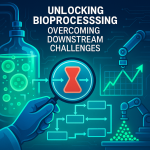🦠 These EVs enhance immune responses without toxicity. They could be modified for better therapeutic effects.
🔬 Advanced isolation techniques facilitate large-scale EV extraction, making spirulina a cost-effective option for biopharmaceutical development.
💉 The next steps include studying safety and the vaccine adjuvant mechanism in human models.
Introduction:
The article discusses recent findings regarding extracellular vesicles (EVs) derived from spirulina, a type of cyanobacteria, highlighting their potential as therapeutic adjuvants in vaccine development. Researchers at James Cook University in Australia conducted a comprehensive evaluation of these vesicles, marking a novel focus on spirulina-derived EVs amid previous studies on other cyanobacteria.
- Spirulina-derived extracellular vesicles (SPEVs) exhibit immunomodulatory properties, making them promising candidates as adjuvants for subunit vaccines.
- The isolation process of SPEVs involved a combination of centrifugation, filtration, ultracentrifugation, and size exclusion chromatography, paving the way for efficient extraction from large cultures.
- Proteomic analysis identified 54 proteins associated with immune modulation in SPEVs, significantly enhancing antigen-specific IgG responses in mice.
- SPEVs possess structural similarities to outer membrane vesicles, featuring distinct bilayer phospholipid membranes, with implications for their physical properties in vaccine application.
- Future research aims to clarify the safety and mechanisms of action of spirulina EVs as adjuvants and explore engineered variants for dual role as vaccine and adjuvant.
Conclusion:
The study indicates that spirulina-derived EVs have considerable promise as adjuvants due to their immunostimulatory properties and ease of large-scale production. Continued research into their safety and functional mechanisms could expand their applications in biotherapeutics, particularly in vaccine formulations, leading to innovations in industrial biotechnology.



